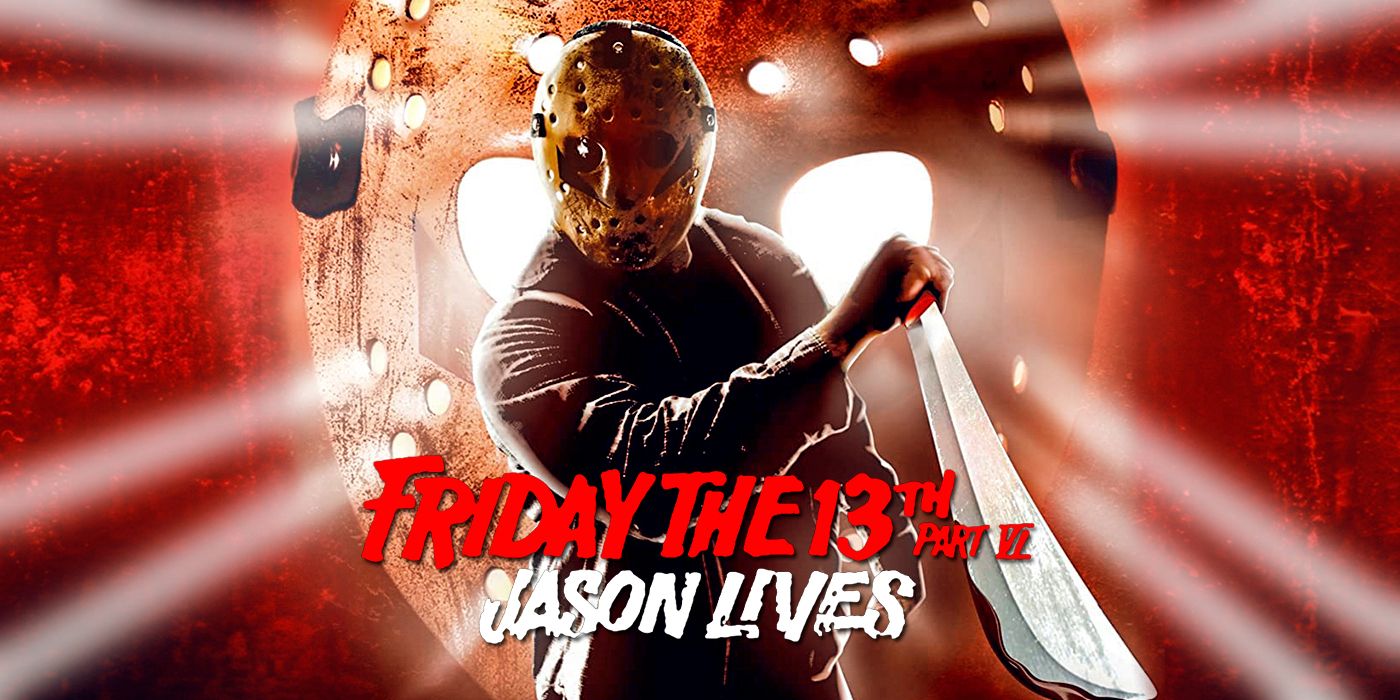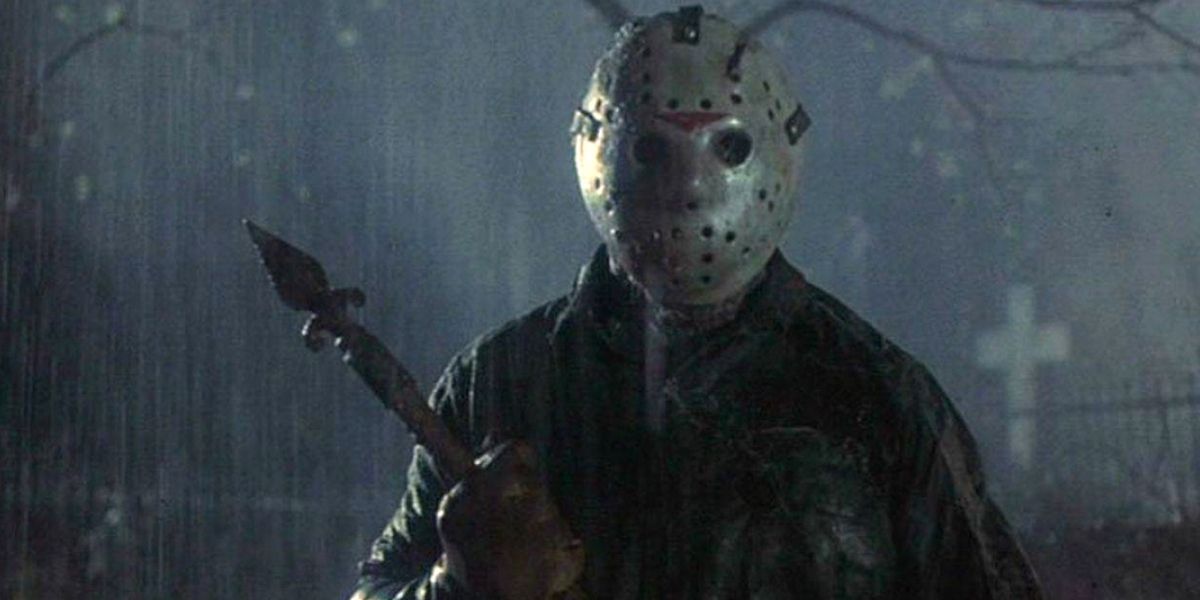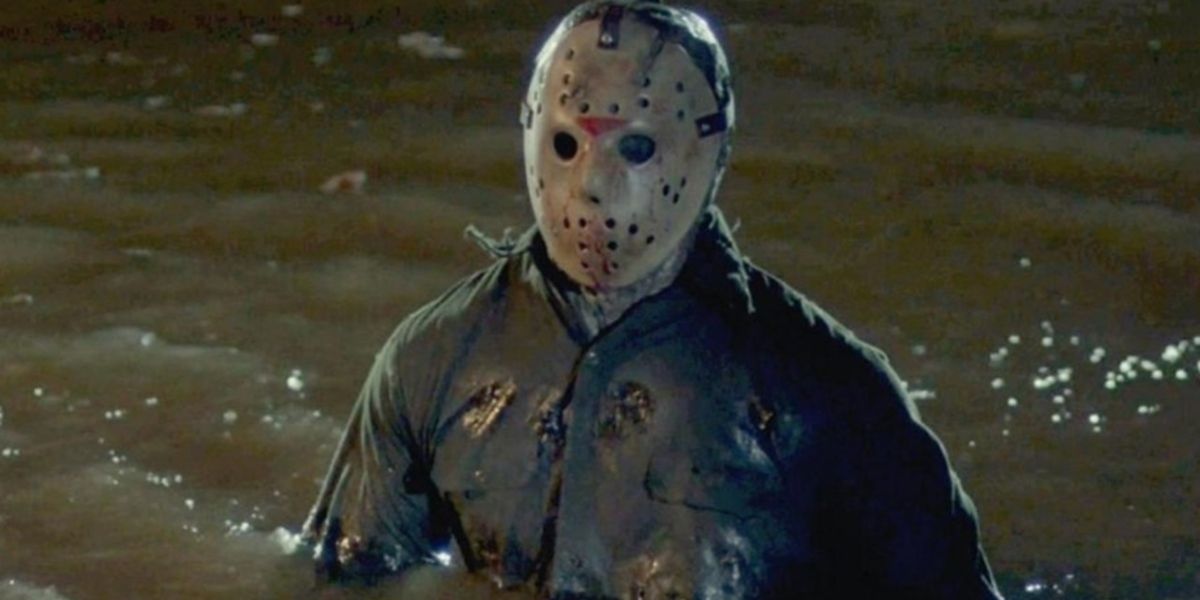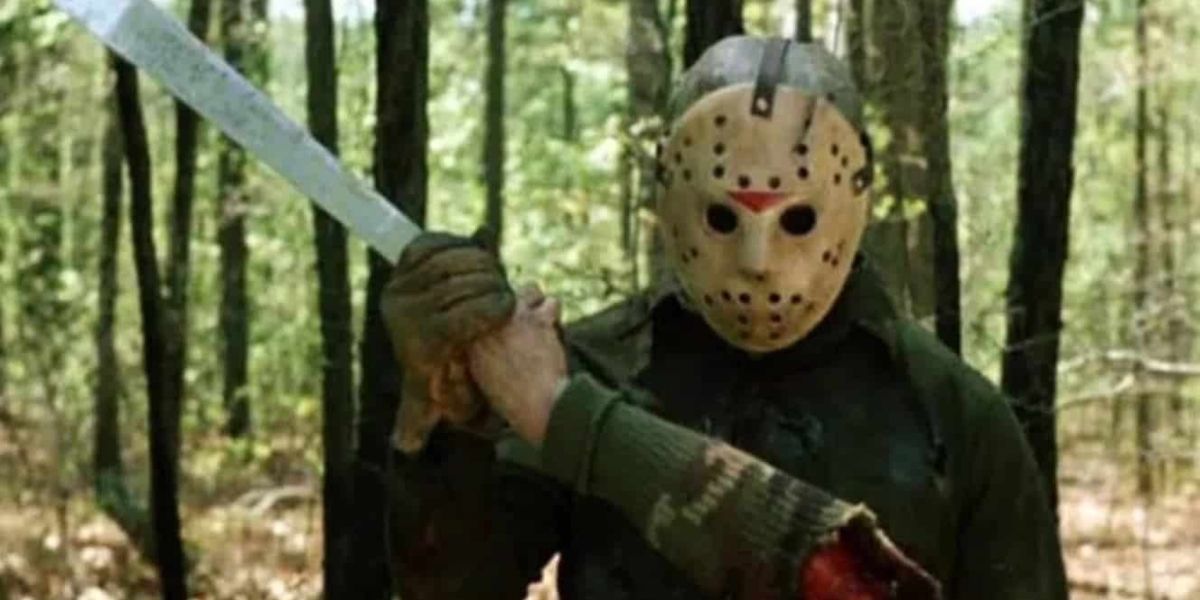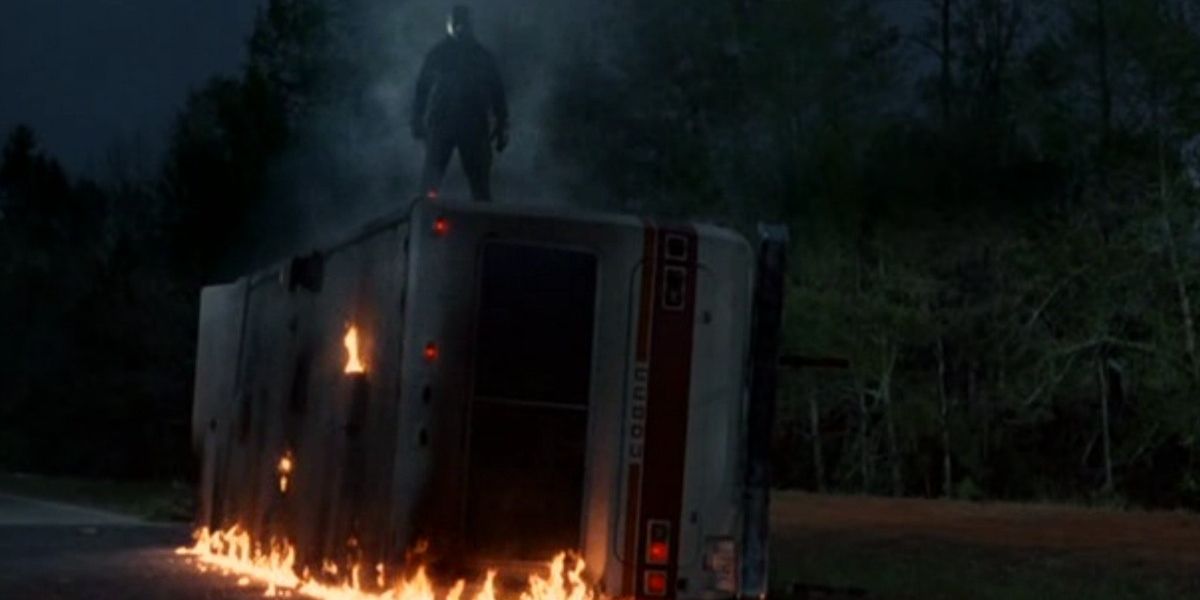By the time it reached its sixth entry, the Friday the 13th franchise was in the midst of an identity crisis. The first four installments had gradually defined the series identity. The original 1980 film established the backstory of Jason Voorhees’s death at Camp Crystal Lake, Friday the 13th Part 2 introduced Jason as the main killer, Friday the 13th Part III debuted Jason’ iconic hockey mask, and Friday the 13th: The Final Chapter featured the best set of characters in the series yet, including the young Tommy Jarvis (Corey Feldman). Unfortunately, the fifth film Friday the 13th: A New Beginning failed to keep the momentum going, suffering from a ridiculous twist, lack of inventive kills, and characters too obnoxious to invest in before they meet their grizzly fate. Most importantly, though, A New Beginning dropped the series’ most important element: Jason himself.
What Makes 'Jason Lives' So Great?
Thankfully, the masked killer made his welcome return in Friday the 13th Part VI: Jason Lives—played in this film by C.J. Graham—which saw him facing off with his old nemesis Tommy Jarvis, now played by Thom Matthews. However, Jason Lives didn’t just pull off the recurring storyline—it changed up the franchise’s tone for the better. Jason Lives is self-referential; it breaks the fourth wall to spoof the saga’s recurring elements, and it was the perfect way to justify the confused continuity and appease longtime Friday the 13th fans. 35 years after its release, Jason Lives hasn’t been topped, and it's unfortunate that the later installments abandoned its cheeky quality.
The knowing silliness is apparent within the pre-credits sequence, in which Tommy digs up Jason’s grave, only to inadvertently resurrect him through a fence post struck by lightning. (A direct homage to Frankenstein.) While the series had always been playful with its canon, this was straight-up science fiction that imbued Jason with superhuman strength. Introducing a new killer hadn’t worked in A New Beginning, and Jason Lives brings back the central slasher in a fun way that acknowledges the revision; Jason even gets his version of the James Bond gun barrel intro.
Tommy and Jason Have a Memorable History
Tommy’s history with Jason sets up an exciting character arc. The Friday the 13th films find joy in violently dismembering horny teenagers, but the characters have to be memorable. Having a likable lead character traumatized by his past experiences with Jason sets up a confrontation with actual stakes (literally and figuratively), but it also helps bypass exposition. Tommy desperately tries to explain Jason’s capabilities to other characters, and the film finds comedy in their refusal to believe him. It was the first time a non-Jason character’s storyline was woven throughout multiple films, adding a depth that wasn’t present in the earlier installments.
Even if Tommy is the only character aware of Jason’s backstory, the other characters are still in on the joke with self-aware dialogue. A couple youthful victims reflect that they’re destined to be “real dead meat,” and the film even parodies its own soundtrack cues when Nicki (Darcy DeMoss) asks her boyfriend Cort (Tom Fridley) to time his climax with the end of a ten-minute song. The film playfully chides the audience’s interest in the gruesome kills when the cemetery keeper Martin (Bob Larkin) remarks that “folks have a strange idea of entertainment.” This jab came after critics like Roger Ebert and Gene Siskel had decried the series for its depravity.
The Summer Camp Was a Character Itself
More important than any singular character is Camp Crystal Lake itself. Friday the 13th was hardly the first slasher film, but the summer camp setting with its accompanying adolescent anxieties made the series unique. Tommy’s initial attempt to dig up Jason’s corpse came as a botched attempt to confront his own trauma, and Jason does the same by returning to the site of his childhood accident, now renamed Camp Forest Green. Jason Lives honors the series' conceit, as Jason is actually threatening an active camp populated by children for the first time.
The danger doesn’t detract from the fun, and when average users imagine Jason as an icon, they’re most likely imagining his depiction here. He’s become a literal boogeyman, a spooky undead monster that frightens sleeping children. The kids add some truly bizarre jokes, like why is a young girl sleeping by a copy of Jean-Paul Sartre’s existential stage play No Exit?
Between the decapitation of a group of employees on an ill-fated business trip, guys playing paintball (which leaves a bloodied smiley face on a nearby tree), to a sexist creep whose arms are literally torn from their sockets, the kills are more playful. Although it's one of the least graphic installments, Jason Lives is so relentlessly paced that its kills are more frequent. It also makes room for longer setpieces with sustained tension. Nicki and Corts’ roadside demise is one of the best sustained sequences, and concludes with the iconic shot of Jason standing on top of their RV.
Jason Is Immortal
The campy slant also confirmed what was clear in the more grounded installments: Jason is basically immortal. Jason Lives highlights the absurdity when Sheriff Gorris (David Kagen) fails to kill him with three separate shotgun blasts, each with a cheesy music note. Instead of feeling like a retread, the unkillable Jason required the series to be more creative. Tommy manages to defeat Jason after an extended waterside brawl in Camp Crystal Lake by chaining his neck to an activated boat motor. The tease of Jason’s lurking body in his old resting place was the perfect segue to the next installment.
Jason Lives also features a more compelling score that heightened the tone. While the film retained composer Harry Manfredini, who had scored the prior films, it was slightly longer and retained the existential dread of the first installments. While the synth-heavy music of the prior films called unnecessary attention to the jump scares, the slower plucked strings helped make each kill more theatrical and shocking. The film also includes a killer soundtrack that features Alice Cooper and Felony.
Unfortunately, the Lessons Learned Did Not Continue In the Franchise
Sadly, the lessons that Jason Lives should have taught the creative team weren’t retained for the next few installments. Part VII: The New Blood continued the push into supernatural themes, but lacked the self-awareness that had made Jason Lives such a breath of fresh air for longtime fans of the series. Part VIII: Jason Takes Manhattan attempted to be a more straightforward horror film, and featured lead characters that were as endearing as the Jason Lives gang. While Jason Goes To Hell and Jason X at least attempted to laugh at their own ridiculousness, the confusing narratives and rewrites to Jason’s backstory didn’t add the originality that Jason Lives had brought to the franchise.
While the Friday the 13th series didn’t acknowledge the self-awareness that had made Jason Lives such a success, its influence began to exert itself on other horror franchises. Wes Craven channeled his frustrations with the A Nightmare on Elm Street franchise into his meta-sequel Wes Craven’s New Nightmare, which reimagined the story involving the cast and crew of the original film. While New Nightmare didn’t land with much impact during its time, Craven went on to develop the Scream series. Scream and its sequels feature a light of the same fourth wall breaking and in-universe references of Jason Lives, and the film gets more than a few references throughout the Scream franchise.
The 'Jason Lives' Novelization Goes Even Deeper
Fans that were disappointed that Jason Lives didn’t kick-start a new golden age for the slasher series might want to check out the official novelization by Simon Hawke, a veteran genre writer who had also written for the Battlestar Galactica, Star Trek, and Dungeons & Dragons franchises. Hawke’s novel incorporates elements of the story that weren’t in the final film, including the first appearance of Jason’s father in a flashback sequence and a deeper exploration of Tommy’s backstory. While Hawke had also penned the adaptations for the first three films, the Jason Lives novelization featured the most significant edits to the film that inspired it.
While these details are interesting, they underscore how brilliantly Jason Lives tackled the saga’s mythology. Even if there was a more compelling dramatic backstory for Jason and Tommy in mind, including these flashbacks with a nonstop narrative may have disrupted the tone and pacing. Tom McLoughlin understood that these beats weren’t necessary for an audience who simply wanted to see something that they had never seen before in a Friday the 13th movie.
McLoughlin also revealed on the director’s commentary that he was working under tougher constraints than some fans may have realized. The commentary on the DVD deluxe edition revealed that the creative team had sketched out storyboards for an alternate ending that incorporated the backstory of “Mr. Voorhees” from Hawke’s novel. The scene ultimately had to be scrapped due to budgetary constraints, but McLoughlin was still able to sneak in a teaser for Part VII by revealing that Jason had survived the final battle. Sadly, McLoughlin didn’t get the chance to helm any more Friday the 13th movies, but he did direct several episodes of the short-lived television series.
The Friday the 13th series had long abandoned the somber anguish of a grief-stricken mother from its first installment, and by ramping up the silliness and establishing compelling characters, Jason Lives epitomized the series' growth. Jason Lives should have been the new template going forward, and hopefully the upcoming Friday the 13th television series on Peacock from Bryan Fuller will look to the series’ highpoint 35 years prior.

